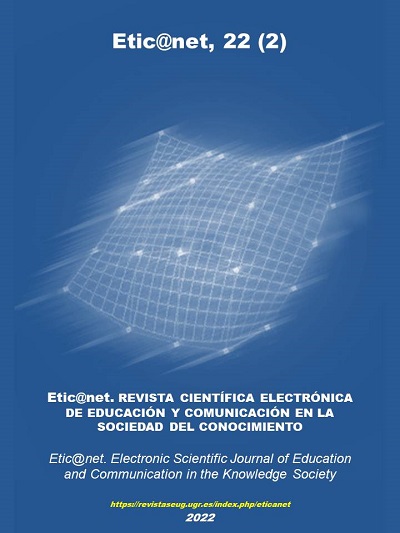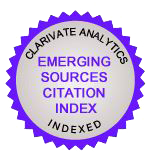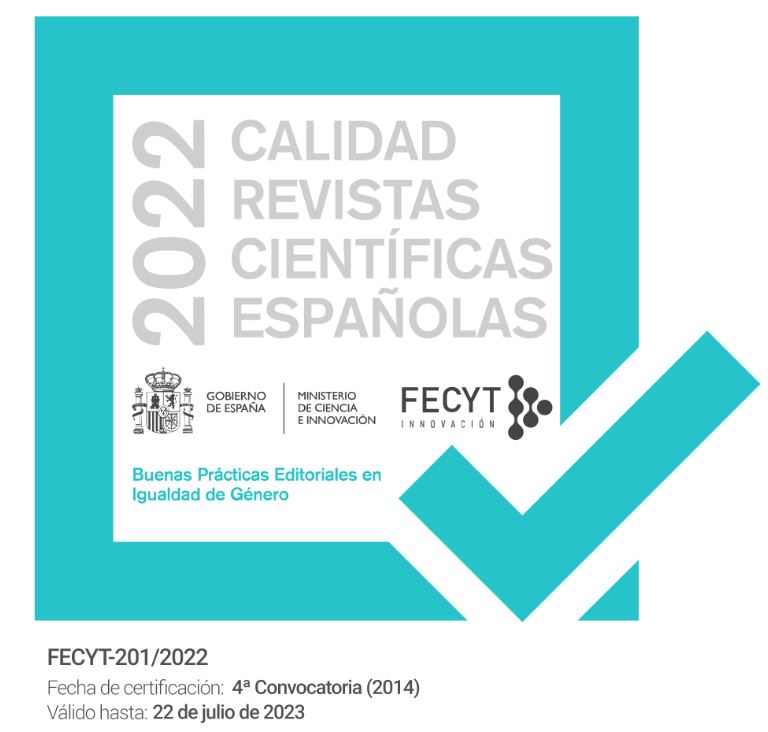Gamification, Higher Middle Education and Covid-19: An intervention to the subject of Chemistry I
DOI:
https://doi.org/10.30827/eticanet.v22i2.23692Keywords:
Gamificación, Educación Media Superior, Química, ContextoAbstract
The purpose of this article was to implement the gamification model in high school students who took the subject of Chemistry I, at CBTis No. 144 in a time of confinement due to Covid-19. This research was carried out from a quasi-experimental quantitative approach, using the pretest-posttest design with one group; In this design, a pre-test (O) was applied to a group of students, then the treatment (X) and finally the post-test (O). In order to verify the hypothesis raised, which established that the teaching and learning process requires the application of techno-pedagogical strategies and tools such as gamification, to increase motivation and commitment in students, and thus observe an improvement in achievement academic. The results showed that when gamifying with the Classcraft platform, students were motivated, engaged, held responsible, had fun, among other benefits, with respect to academic achievement, no significant change was observed. On the other hand, the importance of considering the context where the gamification model will be implemented was also established.
Downloads
References
Consejo Nacional de Evaluación de la Política de Desarrollo Social. Informe de pobreza y evaluación 2020. Chiapas. Ciudad de México: CONEVAL, 2020.
Diario Oficial de la Federación. (1973, 29 noviembre). Ley Federal de Educación. [Art. 2, 20]. Recuperado 21 de septiembre de 2021, de http://publicaciones.anuies.mx/pdfs/revista/Revista8_S2A1ES.pdf
Diario Oficial de la Federación. (2019, 30 septiembre). Ley General de Educación. [Art.84,85]. Recuperado 21 de septiembre de 2021, de http://www.diputados.gob.mx/LeyesBiblio/pdf/LGE_300919.pdf
Elshiekh, R., & Butgerit, L. (2017). Using Gamification to Teach Students Programming Concepts. OALib, 04(08), 1–7. https://doi.org/10.4236/oalib.1103803
Gobierno del estado de Chiapas. (2019). Chiapas: Plan Estatal de Desarrollo 2019–2024. Recuperado 20 de septiembre de 2021, de http://www.haciendachiapas.gob.mx/planeacion/Informacion/PED/PED-2019.pdf
Hueso, A., & Cascant, J. (2012). Metodología y Técnicas Cuantitativas de Investigación. (1.a ed.). Recuperado de https://riunet.upv.es/bitstream/handle/10251/17004/Metodolog%C3%ADa%20y%20t%C3%A9cnicas%20cuantitativas%20de%20investigaci%C3%B3n_6060.pdf?sequence=3
Marín, V. (2015). La Gamificación educativa. Una alternativa para la enseñanza creativa. Digital Education Review, 27, 1–4. Recuperado de https://revistes.ub.edu/index.php/der/article/view/13433/pdf
Matsumoto, T. (2016a). Motivation Strategy Using Gamification. Creative Education, 07(10), 1480–1485. https://doi.org/10.4236/ce.2016.710153
Mauroner, O. (2019). Gamification in Management and Other Non-Game Contexts—Understanding Game Elements, Motivation, Reward Systems, and User Types. Open Journal of Business and Management, 07(04), 1815–1830. https://doi.org/10.4236/ojbm.2019.74125
Nieto-Escamez, F. A., & Roldán-Tapia, M. D. (2021). Gamification as Online Teaching Strategy During COVID-19: A Mini-Review. Frontiers in Psychology, 12. https://doi.org/10.3389/fpsyg.2021.648552
Ortiz-Colón, A. M., Jordán, J., & Agredal, M. (2018). Gamificación en educación: una panorámica sobre el estado de la cuestión. Educação e Pesquisa, 44(0). https://doi.org/10.1590/s1678-4634201844173773
Secretaria de Gobernación. (2014, septiembre). CONSTITUCIÓN POLÍTICA DE LOS ESTADOS UNIDOS MEXICANOS. Recuperado 2 de abril de 2021, de https://www.dof.gob.mx/constitucion/marzo_2014_constitucion.pdf
Published
Issue
Section
License
The authors who publish in this journal agree to the following terms: The authors retain the copyright and grant the journal the right to be the first publication of the work as well as licensed under a Creative Commons Attribution License that allows others to share the work with an acknowledgment of the authorship of the work and the initial publication in this magazine. Authors are allowed and encouraged to disseminate their work electronically (for example, in institutional repositories or on their own website) before and during the submission process, as it may lead to productive exchanges as well as further citation. Earliest and greatest of published works (See The Effect of Open Access).













